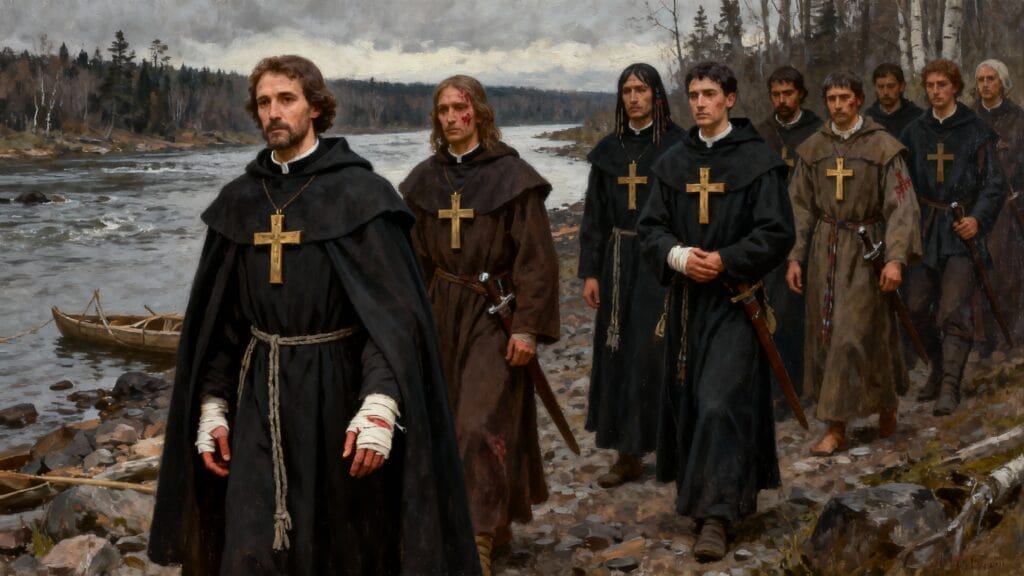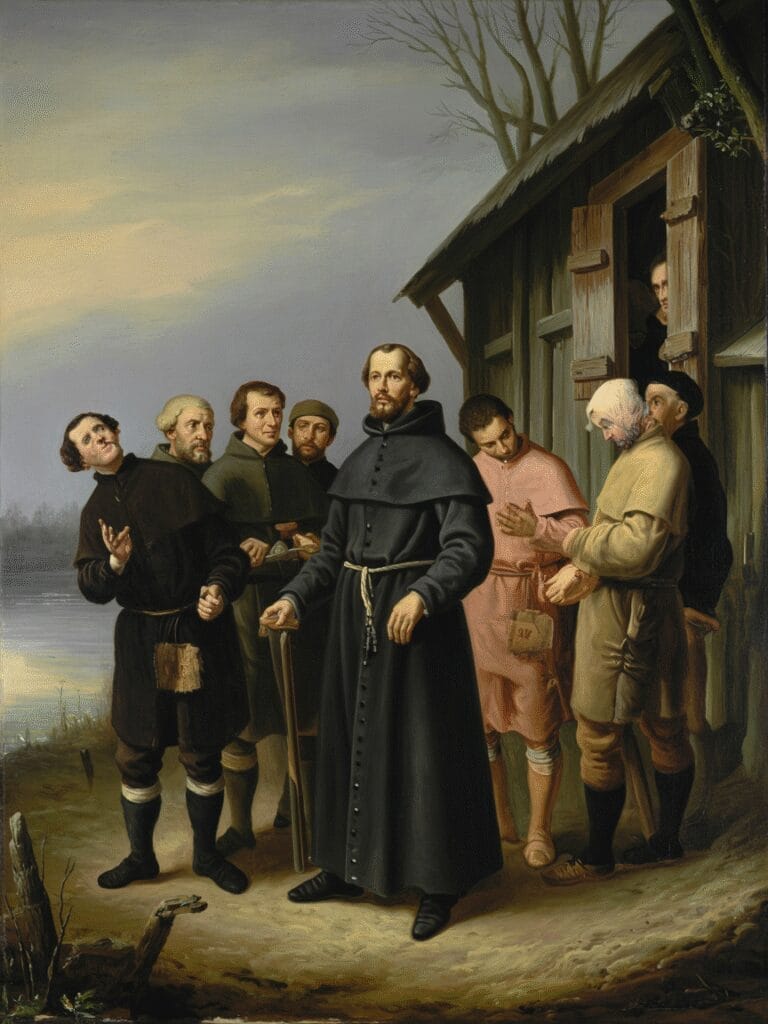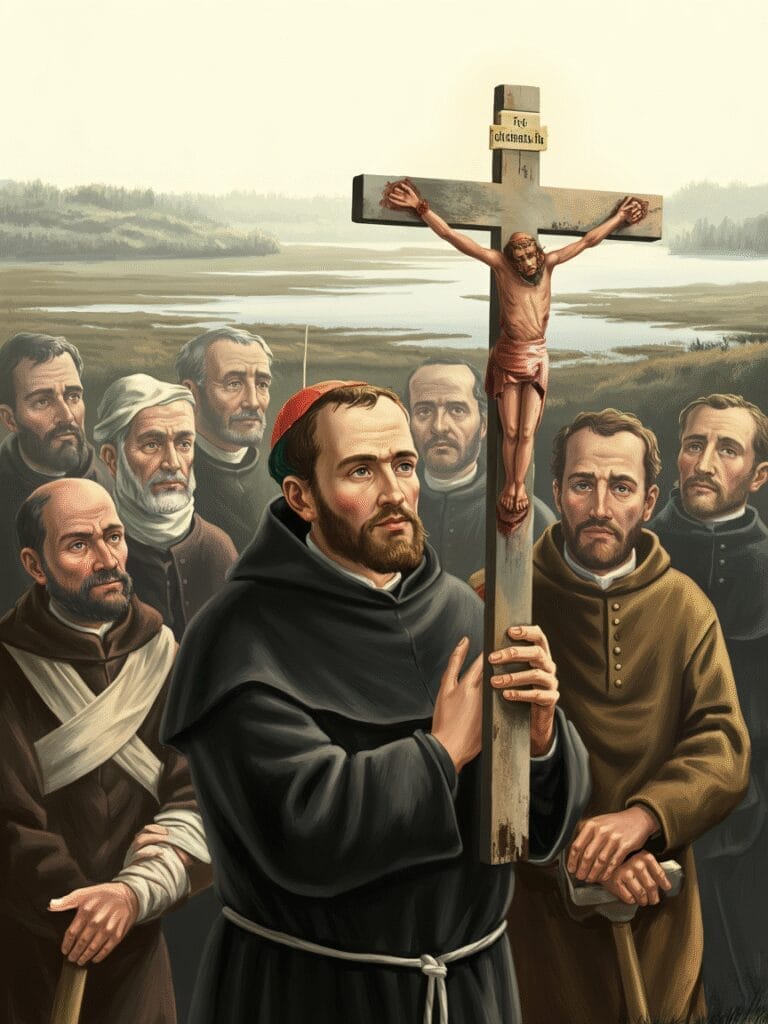Celebrating today the fidelity of Isaac Jogues, a Jesuit priest born in Orléans in 1607 and who died in Ossernenon on October 18, 1646, illuminates Christian courage in the face of fear. Bearing witness in the midst of the Iroquois and Huron wars was his path, until the axe that ended his mission on the banks of the Mohawk River. Along with his companions, he is honored on October 19 in the universal Church, and on September 26 in Canada, a sign of shared memory.

Biographical note
Born in Orléans in 1607, joining the Jesuits in 1624, and then being ordained a priest in 1636, Isaac Jogues was drawn to New France.
Leaving immediately on a mission with Jean de Brébeuf sent him to the Hurons and as far as the Great Lakes, for six years, in a climate of insecurity.
Being captured by the Iroquois in 1642 meant torture, finger mutilations, and servitude in a village near Albany. Escape with the help of Dutch traders allowed him to return to France, where Urban VIII allowed him to celebrate despite his mutilated hands.
Leaving again in 1644 marked his determination to serve, despite injuries and memories of torture.
Travelling in the spring of 1646 to the Mohawks on a peace embassy took him to Ossernenon, where he left a casket that aroused suspicion.
Returning in the autumn of 1646 with Jean de La Lande confirmed his desire to winter to consolidate the fragile peace.
The hostility caused by disease and poor harvests led to accusations of witchcraft against him.
Being struck with a tomahawk at the entrance to a cabin, then beheaded, sealed his martyrdom on October 18, 1646. Naming Lake George “Saint-Sacrement” during his travels underlines the spiritual imprint of his roads.
Being canonized in 1930 with seven companions, then linked to Canadian national memory, places his life in a shared history.

Legend
The “Canadian martyrs” were canonized in 1930, and declared secondary patrons of Canada in 1940, marking official recognition.
The borders of the 17th century do not coincide with those of today, hence the appropriate use of “North American Martyrs” for this group.
Ossernenon corresponds to present-day Auriesville, New York, where three of them were killed.
The rumor of a “harmful box” left by Jogues fuels popular stories about the origin of epidemics and famine in Ossernenon.
The recurring accusation of witchcraft reflects the fear of an invisible evil rather than an established historical observation.
Canadian memory has made these men “architects,” their journeys tracing water and iron routes in the collective imagination.
Shrines in Midland and Auriesville, parishes and institutions bear their names, fixing their memory in the landscape.
The liturgy celebrates them on October 19 in the universal Church, and on September 26 in Canada, bringing together stories and prayer.

Spiritual Message of the Day
Moving forward despite the obvious fear
A lucid faith, nourished by prayer and service to the most exposed.
Discerning his return after torture shows an inner obedience, stripped of illusions and rooted in the Gospel of courage.
Offering one's mutilated hands in celebration reminds us that grace acts in the weakness recognized and offered.
To endure in adversity, not to hate the enemy, and to seek peace, reveal a charity that goes beyond the instinct to withdraw.
The concrete image of the tomahawk and the Mohawk River reminds us that Christian witness is rooted in specific places and daily choices.
Today, this testimony invites us to serve humbly, to speak without fear, and to transform the trial into a discreet offering.
Prayer
Lord Jesus, give the grace of humble courage, firm without harshness, and patient in contradiction.
Strengthen hearts wounded by injustice, and teach us to seek peace even in the midst of conflict.
Grant to love those who oppose, to bless when fear rises, and to persevere when strength declines.
Inspire the simple word that uplifts, the discreet gesture that heals, and the daily offering that glorifies you.
Through the intercession of Isaac Jogues and his companions, make our weaknesses a path of grace and service.
You who live and reign forever and ever, make our steps firm on the path of peace.

To live today
- Visit an isolated person and offer a time of listening without judgment, as a sign of concrete peace.
- Pray for missionaries and workers of reconciliation in areas of tension, near and far.
- Take a 10-minute review of apostolic courage and a humble word to say today.
Memory
Pilgrim at the Martyrs' Shrine in Midland, a major site of memory of the Huron mission and several martyrs.
Discover the sanctuary of Auriesville, associated with Ossernenon, where René Goupil, Isaac Jogues and Jean de La Lande were killed.
Venerates the relics of Isaac Jogues at the Notre-Dame Cathedral Basilica of Quebec, a sign of living memory in Canada.
A tour of the parishes and institutions bearing their names, testifying to a deep anchoring in the educational and hospital fabric.
Observe that this memory crosses current borders, unifying local stories in a single thanksgiving.

Liturgy
- Readings/psalm: The celebration can follow the readings of the day or draw from the Common of Martyrs, with themes of fidelity unto death, invincible trust, and apostolic boldness, echoing the witness of the North American martyrs. The sermon can comment on perseverance in trial, charity toward the enemy, and peace sought despite fear, illuminating the life of Isaac Jogues and the memory of his companions. The proposed psalm can emphasize the joy sown in tears, and the victory of hope over violence.
- Song/Hymn: Choose hymns from the Common of Martyrs or songs about witness and mission, in order to unite memory and sending. An offertory song can evoke the offering of life, while a communion song can recall the love that drives out fear and opens the way to forgiveness. A final mission song invites us to “not fear” and to carry the Gospel with gentleness and strength, in the spirit of these witnesses.


